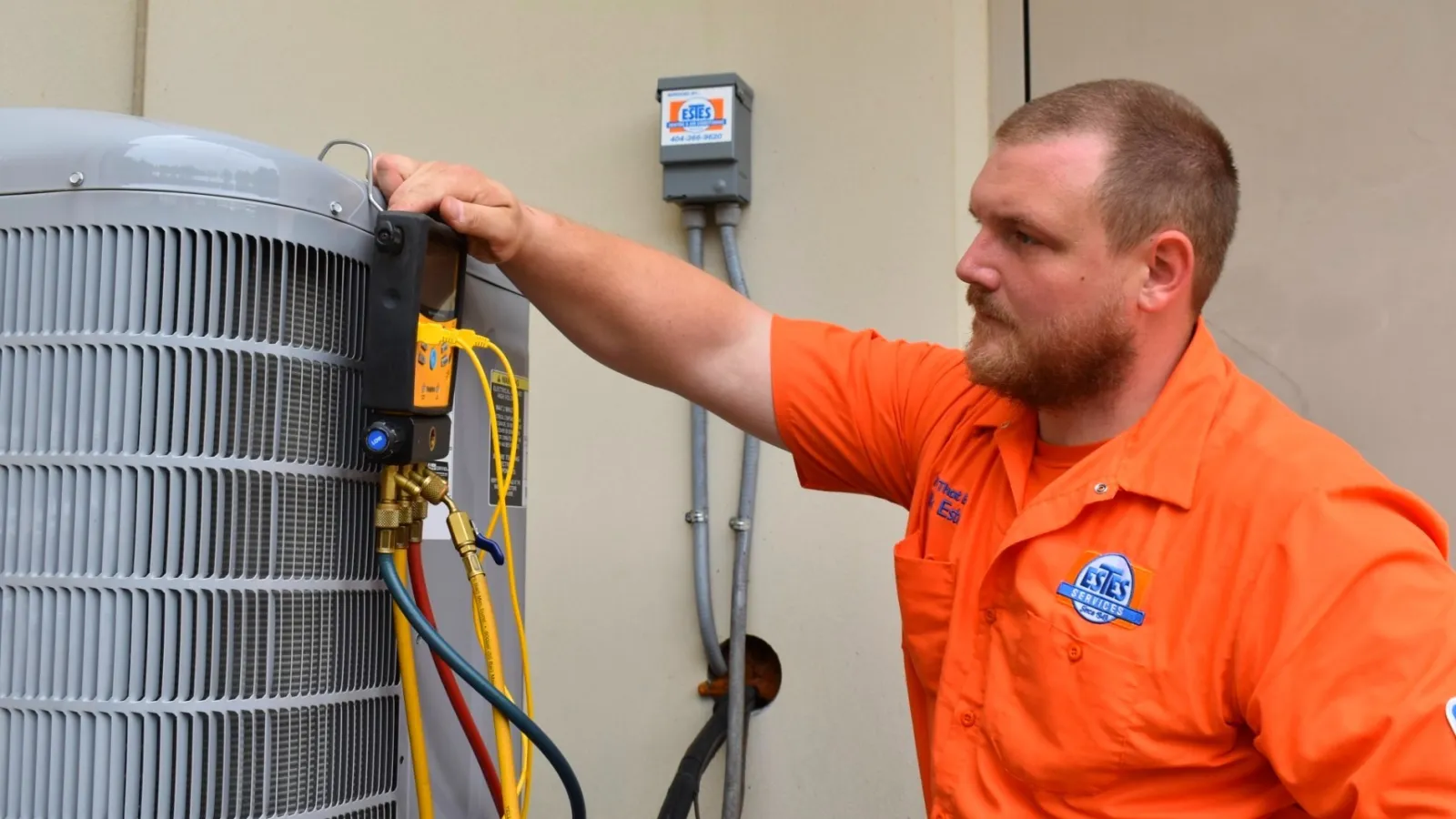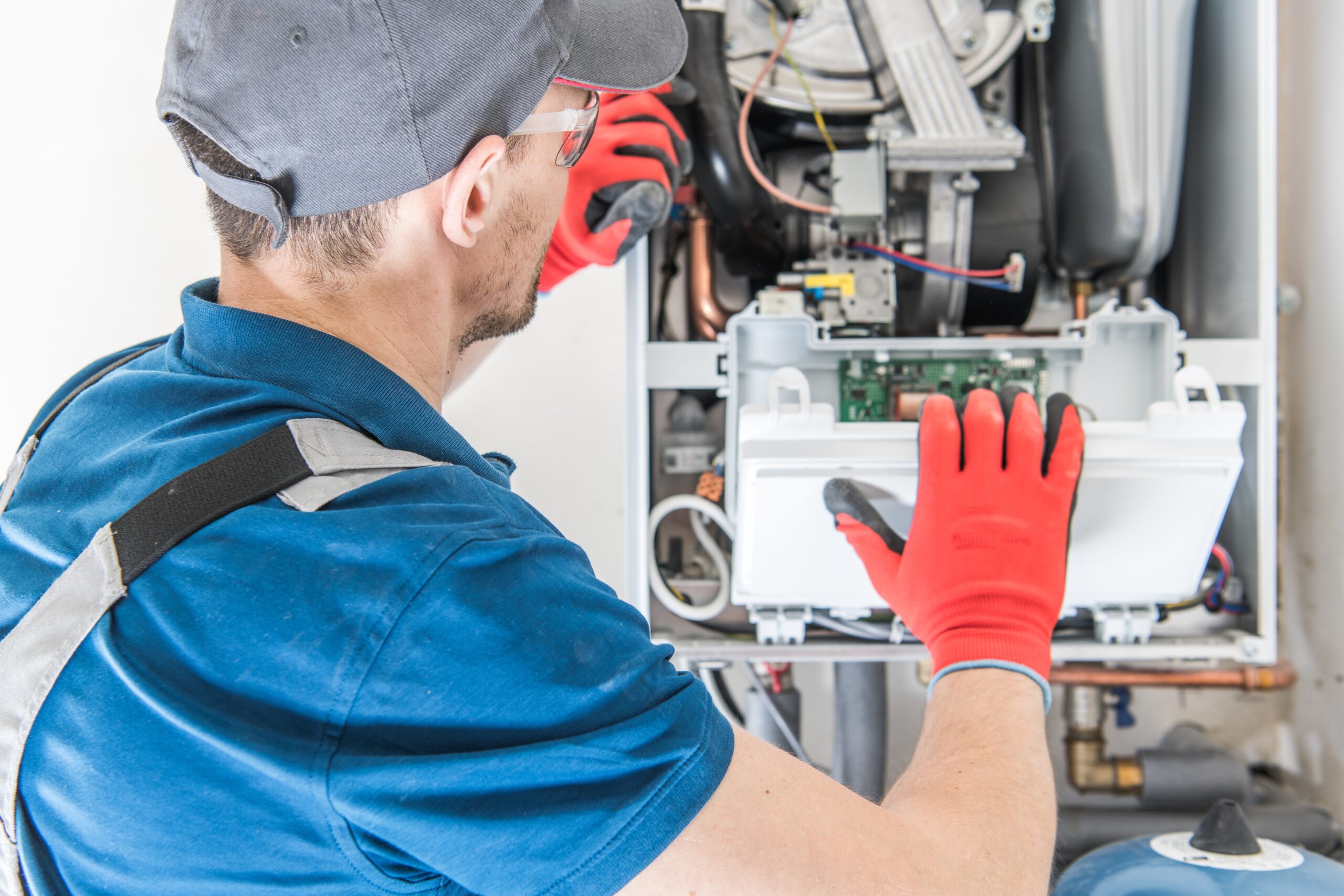Choosing the Right Time for furnace replacement
Wiki Article
Exactly How a Heatpump and Furnace Interact to Optimize Your Home's Heating Efficiency
Understanding how a warm pump and furnace work with each other is necessary for property owners looking for efficient home heating solutions. Each system has its strengths, offering a well balanced method to home comfort. The warm pump excels in moderate temperatures, while the heater provides fast warmth throughout extreme cold. This harmony not just decreases power expenses but also boosts the life-span of both home appliances. What variables affect this collaboration, and just how can property owners maximize their advantages?Understanding Warmth Pumps: Exactly How They Function
Although many individuals may be not familiar with their internal functions, heat pumps play an important function in contemporary furnace. These tools operate by transferring warm from one place to another, making use of the concepts of thermodynamics. In chillier months, a heatpump essences warm from the outside air, ground, or water, and transfers it indoors to heat the living space. Conversely, throughout warmer months, it can reverse the procedure, functioning as an air conditioner by eliminating heat from inside to the outside.Heat pumps contain an evaporator, compressor, expansion, and condenser valve. The refrigerant within the system absorbs heat as it vaporizes at low temperatures and pressures. The compressor then raises the pressure and temperature of the cooling agent, permitting it to release warmth as it condenses. This efficient process can substantially minimize power intake contrasted to conventional heating methods, making heat pumps a sustainable choice for climate control in homes.The Duty of Heaters in Home Home Heating
Heating systems play a necessary function in home heating by providing a trusted resource of warmth during the colder months. They run by producing heat via burning or electric resistance, distributing it throughout the home using air ducts or radiant systems. The effectiveness of a furnace is frequently gauged by its Yearly Fuel Usage Effectiveness (AFUE) score, which indicates exactly how properly the system converts fuel into heat.Furnaces can make use of different power sources, including all-natural gas, lp, oil, or power, enabling homeowners to choose one of the most suitable choice for their demands. Unlike heat pumps, which may have a hard time in severe cold, furnaces maintain consistent performance, ensuring that interior temperature levels stay comfy no matter outdoor conditions. In addition, modern heaters often come geared up with sophisticated technology, such as variable-speed blowers and smart thermostats, boosting their effectiveness and responsiveness. This flexibility makes heaters an essential element in all-inclusive home heating methods.
Advantages of Making Use Of Both Equipments Together
Integrating the toughness of both furnaces and heatpump can lead to a much more efficient and reliable home heating option. Utilizing both systems enables home owners to make use of the warmth pump's energy performance throughout milder temperature levels while relying upon the furnace for even more extreme cold problems. This dual method can significantly decrease energy costs, as heat pumps eat less electricity than conventional home heating methods when temperatures are moderate.Additionally, utilizing both systems with each other can improve convenience degrees in the home. Heatpump can offer consistent, also home heating, while heaters can quickly increase ambient temperatures when required. Furthermore, the integration of both systems can extend the lifespan of tools by decreasing deterioration on each device, as they share the workload. Eventually, homeowners can delight in a well balanced, cost-effective heating remedy that readjusts effortlessly to varying weather, guaranteeing a warm and welcoming home throughout the winter months.Exactly How Warm Pumps and Furnaces Enhance Each Other
They create a complementary heating system that makes best use of effectiveness and comfort when house owners incorporate warmth pumps and furnaces. Heat pumps operate by moving warm from the outdoors air or ground, making them very efficient in modest environments. They stand out during milder temperature levels, providing economical home heating. Conversely, furnaces create heat via combustion or electrical resistance, providing solid, instant warmth during extreme chilly conditions.The combination of these two systems enables for dynamic modifications based on temperature changes. During warmer months or milder winter months days, the warmth pump can take the lead, saving energy and reducing prices. As temperature levels decrease, the furnace can perfectly involve, making certain consistent heat throughout the home. This harmony not just optimizes energy usage but likewise boosts the life-span of both systems, as each device operates within its excellent efficiency variety. Together, they develop a balanced setting that adjusts to varying environment needs.
Optimizing Efficiency: Tips for Homeowners
House owners can improve their home heating performance with several practical techniques. Developing a normal maintenance routine, integrating wise thermostat innovation, and carrying out reliable insulation and securing remedies are essential steps. These procedures not only enhance convenience however also lower power expenses.Normal Upkeep Arrange
To assure optimal heating effectiveness, developing a normal maintenance routine is necessary for any type of home. Homeowners must prioritize routine examinations of both warm pumps and heating systems to determine peak efficiency. This consists of transforming air filters each to three months, as clogged filters can substantially decrease effectiveness. Additionally, organizing specialist upkeep at least yearly enables specialists to identify and deal with prospective problems before they intensify. Home owners should additionally cleanse the heat pump's exterior device to avoid debris accumulation that can hinder air movement. By adhering to check my site a routine maintenance timetable, home owners not just improve their heater' performance but also expand their lifespan, causing better convenience and decreased power expenses throughout the colder months.Smart Thermostat Integration
Integrating a wise thermostat right into a home heater can substantially enhance energy effectiveness, particularly as it permits accurate control over temperature setups. These tools can find out the home owner's schedule and choices, instantly adjusting the temperature to optimize comfort while decreasing power usage. As an example, they can lower heating during times when the home is vacant, decreasing unneeded consumption. Numerous clever thermostats additionally give real-time power usage data, making it possible for house owners to make educated decisions concerning their heating behaviors. Additionally, remote gain access to using mobile phone apps permits users to readjust settings from anywhere, making certain the home is warm upon return. Generally, smart thermostat assimilation not only boosts comfort yet substantially adds to energy financial savings and performance.
Insulation and Securing Solutions
Smart thermostats play a crucial function in energy efficiency, yet their performance can be considerably improved by proper insulation and sealing remedies. Homeowners ought to focus on protecting attics, floors, and wall surfaces to decrease heat loss. Top quality insulation materials, such as spray foam or fiberglass, can greatly enhance thermal resistance. Furthermore, securing voids around doors, windows, and ducts prevents cold air seepage and warm retreat. Weatherstripping and caulking are reliable methods for addressing these leaks - ductless mini splits. Regular examinations for air leaks, together with using blower door examinations, can assist identify problem locations. By investing in insulation and securing, home owners can enhance the performance of their heating unit, ultimately resulting in decreased energy consumption and reduced energy costsmy explanation
Common Misconceptions About Warmth Pumps and Furnaces
What misconceptions border heatpump and heating systems? Several individuals wrongly think that heatpump are inadequate in colder environments. Actually, modern-day heatpump are made to run efficiently even in low temperature levels, supplying reputable home heating throughout winter. An additional usual myth is that heaters are always more reliable than heat pumps. Nonetheless, this depends on the specific power sources and effectiveness scores of the units concerned. Some may additionally assume that using both systems all at once is unnecessary, however in truth, this mix can optimize home heating effectiveness, particularly during severe climate problems. In addition, individuals frequently assume that heatpump require consistent upkeep, when truthfully, they have similar maintenance requires to conventional heating unit. By unmasking these myths, homeowners can make more enlightened decisions concerning their home heating choices, inevitably resulting in improved convenience and energy performance in their homes.Upkeep Factors To Consider for Combined Systems

Often Asked Inquiries
Can Warmth Pumps Job Successfully in Very Cold Climates?
Heat pumps can battle in extremely cool climates as a result of lowered effectiveness and heat removal restrictions. Nonetheless, advancements in innovation have resulted in designs created for much better performance in such problems, boosting their feasibility in harsh settings.
The Length Of Time Do Warm Pumps and Furnaces Typically Last?
Heatpump generally last 15 to twenty years, while heaters have a lifespan of 15 to three decades. Normal upkeep can expand their long life, ensuring effective this website operation and minimizing the need for early replacements.
What Is the Typical Expense of Putting Up Both Systems?
The average cost of setting up both a heatpump and a furnace normally varies between $5,000 to $10,000 - heat pump service. Aspects affecting this price consist of system dimension, installation complexity, and regional labor pricesExist Tax Obligation Motivations for Using Energy-Efficient Home Heating Equipments?
Many house owners ask about tax obligation incentives for energy-efficient heating unit. Numerous federal and state programs commonly provide discounts or credits, encouraging the adoption of lasting technologies to minimize power usage and advertise environmental responsibility.Exactly how Do I Pick the Right Size Heatpump and Heating System?
Choosing the best size heatpump and furnace includes calculating the home's square video, thinking about insulation top quality, and assessing neighborhood climate. Consulting a specialist can guarantee perfect system efficiency and energy effectiveness based upon particular demands. heat pump installation ooltewah tn. Understanding how a heat pump and furnace work together is important for house owners seeking reliable heating options. In cooler months, a heat pump removes warm from the outside air, ground, or water, and transfers it inside to warm up the living room. When house owners integrate warmth pumps and heating systems, they create a complementary home heating system that optimizes performance and convenience. Warm pumps run by moving warmth from the outside air or ground, making them very reliable in moderate environments. Heat pumps can battle in incredibly chilly climates due to decreased performance and warm extraction restrictionsReport this wiki page